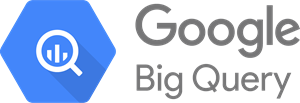Challenge
Breaking down data silos to empower better decisions.
Tyson set out on their analytics modernization journey with the primary goal of better connecting their data. With massive amounts of disparate data moving across data lakes, it was a challenge to navigate this information effectively. “As we went down the Hadoop path, we quickly found that was not a scalable solution. That was one of a few reasons why we quickly turned to AtScale,” said Chad Wahlquist, Director Data Strategy and Analytics Technology Platforms at Tyson Foods.
Moreover, many data analysts at the organization did not even have a way to efficiently extract data to spreadsheet-based reports, let alone leverage BI tools connected to live data. Beyond accessing data, a fundamental challenge was the ability to blend data together. With different raw data formats, it was a tiresome engineering exercise to combine data sets in a way analysts could use. Plus, with so many different data consumers at the business, it was impractical to scale the data team to support all requests.
The business was stuck in an analog experience––and, in the face of an extremely dynamic market (for example, navigating the impact on business from COVID-19), they needed to pursue a more scalable and flexible data strategy to stay competitive and successful.
Solution
AtScale delivers a single source of truth
By connecting siloed data using AtScale’s semantic layer, Tyson was able to unify disparate data into a governed data model that was analysis-ready. By predefining calculations, metrics, and dimensional hierarchies, the organization was able to cut down on redundant work and maintain centralized data. This saved the business time and reduced errors and conflicting analyses––empowering business analysts to use trusted building blocks of data. This formed the cornerstone of self-service analytics at the company and led to more empowered and data-driven decision-making.
The ability to abstract the model that data consumers work with from the underlying raw data sources also supports infrastructure agility. With AtScale in place, it no longer matters whether data lives in Hadoop, Amazon RedShift or Google BigQuery. This has enabled cloud migration without disruption to end users.
Further, the ability to manage AtScale models independently from source data enabled the team to be more agile and optimize their data ops. By maintaining production and development versions of models, they are able to continually improve, test, and release new analytic capabilities more seamlessly.
Results
A connected, data-driven company able to respond to change
AtScale supported Tyson in their analytics modernization journey. They are now able to access data from any source, centralize it, and enforce analytics governance policies using AtScale’s semantic layer. The ability to manage data models, calculations, dimension definitions, access control, and governance in a single location instead of in individual data stores or in individual BI tools is far more efficient. It also reduces security risks and misinterpretation of data.
“As we look at our one data model on our hyper-scaled backend of BigQuery, we’ve solved a lot of problems where we had fragmented systems,” said Wahlquist. “Now, we’re building this real core piece on top of AtScale and BigQuery, and exposing that to all of our applications.”
With AtScale, data consumers can easily confirm where the data came from and that it will match what other teams are reporting. Tyson was able to get more out of AtScale by taking the opportunity to put controls in place for ingestion into the lake. This enables them to ensure data is categorized and classified properly and reduce chaos. Most importantly, they are now able to easily build and manage analysis-ready data sets through AtScale.
Tyson’s analysis “building blocks” delivered through AtScale enable a more composable approach to analytics, allowing analyst teams to test new ideas in hours instead of days. With AtScale, Tyson was able to achieve world-class analytics, moving well beyond their legacy analog approach. They are now equipped to leverage the power of modern data and support better decision-making at scale.




